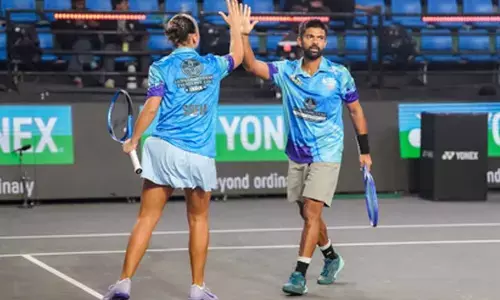Using gamification to ignite student learning

Using gamification to ignite student learning
We're all familiar with Mendeleev's periodic table of elements. It was a revolutionary method of categorizing and classifying elements; especially in a deck-like table structure.
We're all familiar with Mendeleev's periodic table of elements. It was a revolutionary method of categorizing and classifying elements; especially in a deck-like table structure.
It's not a coincidence that the periodic table resembles an arrangement of card decks: Mendeleev enjoyed playing cards and he used the classic deck structure to categorize elements in a way he would understand. He used the rules of a game to relate to a non-game theory; by doing so, he simplified the concept of elements and their functions. So, gamification in education isn't entirely a new idea.
The modern twist is obviously that there are more ways to explain concepts beyond card games. The modern gaming industry is slated to hit $94 billion by 2024. Markets and industries are rocketing their way towards catching up to Millenial and Gen-Z trends, and it was only a matter of time before education caught up to the needs of the new generation. Educators now have a new market to introduce more captivating ways to educate.
Students will gleefully participate in mundane activities if gaming mechanisms are combined with careful examination of aligned information. Gamification in learning has transformed traditional learning into an enhanced learning strategy to tackle concepts that might otherwise be harder to understand.
Game-based higher education is predicted to rise by approximately 32% by 2023. To support this growth, 67% of the students worldwide have said that gamified learning was more motivating and engaging than traditional learning modes.
All of this leads us to ask one question- what really is gamification?
Gamification is a set of activities and processes to solve problems by using the characteristics of game elements. In layman's language, gamification is the use of games like elements and game principles in non-game contexts.
Traditional methods of learning can be restrictive for students, it might be especially challenging to cater to the student's needs that are diverse and mature. By catering to various needs, the student's performance, in turn, sees a positive change, encourages them to work harder, and engages the students better. In a study by Science Direct, students who are educated with challenge-based gamification helped alleviate their performance by 89.5% in comparison to the students who were taught with lectures and notes only.
Every successful video game is deeply immersive and engaging. That is because, neurologically, it stimulates the dopamine centers of your brain. It makes you want to beat that tough level, because you have an interest in completing the task.
The same gamification principles applied to learning can lead to classes full of students who are intrinsically motivated to learn.
Is gamification effective?
Gamification enhanced retention by over 12 percent and total performance by over 7 percent, as per the International Journal of Educational Technology in Higher Education.
Examples
A few educators institutes have utilized games for learning for various subjects to keep the students engaged in learning. Many schools today have started utilizing teaching applications and educational games on smart devices to help their students. Few strategies that can be adapted to ignite the student's attention are:
Set the environment
The surroundings and storytelling are the heart of gamification. Setting the right environment allows introducing students to the course structure and the course narrative at the same time. The narrative should come first, and then the preparation for real-life obstacles may begin.
Start the journey
Start by giving a simple assignment to involve the students in the process of learning through a quest to encourage an attitude of inquiry. In sports coaching, this would entail creating game-like exercises or simulating scenarios that the participants might encounter in competition. This sort of activity emphasizes that learning is a journey and that students do not just participate in learning activities to show that they've learned something, but also to gain understanding and abilities over time much like video games use tutorials to explain concepts, educators can use microlearning. Microlearning is an excellent match for gamification since it organizes tiny amounts of knowledge in a repeatable manner, which can help with long-term understanding.
Keep courses flexible
Courses need to be constructed in such a manner that students' attention is maintained throughout. The flexibility of a student-centered course design allows for customized projects or unique experiences that allow students to take charge of their own learning.
The pandemic has proven to us that teaching methods have to adapt to the changing circumstances. As students, getting a 100 per cent on a test is a good reward. It makes the effort of studying worth it. What better way to motivate students to learn than by gamifying the reward system?
(The author is Chief Business Officer at Tribyte Technologies)

















